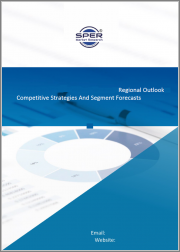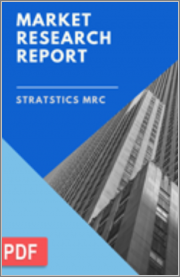
|
시장보고서
상품코드
1279585
세계의 양식어 시장 : 예측(2023 -2028년)Global Fish Farming Market - Forecasts from 2023 to 2028 |
||||||
세계의 양식어 시장은 연평균 4.86% 성장하여 2021년 2,843억 7,500만 달러에서 2028년 3,963억 1,200만 달러에 달할 것으로 예상됩니다. 상업적 어류 양식은 어류 양식이라고도 하며, 주로 식용을 목적으로 어항이나 어류 연못과 같은 인공적인 수조에서 이루어집니다. 양식의 일종으로 갑각류, 어류, 연체동물 등의 수생생물을 자연 또는 인공적인 환경에서 규칙적으로 사육하고 수확하는 것입니다. 잉어, 연어, 메기, 틸라피아는 세계에서 가장 인기 있는 양식 어종입니다.
세계에서 어류 단백질에 대한 수요가 증가함에 따라 자연산 어류가 남획되어 어류 자원이 고갈되고 있습니다. 또한 어류 양식은 충분한 먹이를 공급받고 천적과 경쟁으로부터 보호받고 수의사 치료를 받을 수 있는 인공 어류 군집을 구축할 수 있습니다. 따라서 어육 단백질에 대한 수요 증가와 수산 산업의 성장은 분석 기간 중 양식어에 대한 세계 시장의 성장을 가속할 것이며, 2020년에는 35억 유로 상당의 양식으로 110만 톤의 수생 생물을 생산할 것으로 예상됩니다.
Advancing Integrated Agriculture-Aquaculture, Recirculating Aquaculture Systems, Genetics &Genomics tools 등 첨단 기술의 도입으로 어류 양식의 효율성과 생산 능력은 지속적으로 향상되고 있습니다. 지속적으로 향상되고 있습니다. 그러나 채식주의 트렌드, 소비자들 사이에서 생선 관련 알레르기 증가, 동물 학대에 대한 엄격한 규칙과 규정의 시행은 시장 성장을 저해할 것으로 예상되는 몇 가지 요인입니다.
어육 단백질에 대한 수요 증가는 예측 기간 중 어류 양식에 대한 수요를 촉진할 것으로 보입니다.
어류 양식 시장의 성장을 가속하는 주요 요인 중 하나는 세계 어육 단백질에 대한 높은 수요입니다. 생선은 세계에서 가장 널리 소비되는 단백질 형태 중 하나입니다. 사람들이 소비하는 대부분의 생선은 양식장과 인공어장에서 생산됩니다. 세계 해양 자원의 85%가 고갈되거나 남획되어 양식어 사업이 크게 성장하고 있습니다. 세계 인구가 점점 더 풍요로워지고 도시화가 진행되어 2050년에는 90억 명에 달할 것으로 예상되는 가운데, 양식어는 단백질 공급원에 대한 수요 증가에 대한 해결책이 될 수 있습니다.
FAO 데이터에 따르면 세계 33억 인구의 1인당 평균 동물성 단백질 섭취량 중 약 20%를 생선으로 섭취하고 있으며, 세계 많은 지역에서 건강한 식습관을 유지하기 위해 생선을 섭취하는 것이 필수적입니다. 미국 해양대기청의 'Fisheries of the United States 2019 report'에 따르면 미국인들은 2019년 1인당 19.2파운드의 해산물을 소비했으며, 2019년 영국은 11억 5,000만 파운드 이상의 가치에 해당하는 23만4000톤 이상의 양식 식용 생선을 생산했습니다.
또한 생선은 비타민 D와 B12와 같은 필수 영양소가 풍부해 세계에서 가장 건강한 식품 중 하나입니다. 또한 생선은 몸과 뇌에 필수적인 오메가3 지방산의 보고이기도 합니다. 또한 Journal of the American Medical Association에 따르면 생선을 섭취하면 알츠하이머병의 위험이 감소하는 것으로 보고되고 있습니다. 이처럼 생선 섭취와 관련된 다양한 건강상의 이점이 생선 수요를 증가시켜 시장 성장을 더욱 촉진하고 있습니다.
아시아태평양은 예측 기간 중 세계 양식어 시장에서 큰 비중을 차지할 것으로 예상됩니다.
아시아태평양은 어류 양식에서 큰 시장 점유율을 차지할 것으로 예상되며, 2020년 아시아에서 약 7,700만 톤의 식용 어류가 생산되어 세계 생산량의 88.4%를 차지할 것으로 예상됩니다. 또한 아시아는 세계 최대 양식 지역이기도 합니다. 중국, 인도 등 국가에서 확립된 수산업도 이 지역의 성장을 가속하고 있습니다. 중국은 2020년 4,960만 톤의 식용 어류가 생산되는 등 세계에서 가장 중요한 동물성 양식 산업을 보유하고 있습니다. 공식 데이터에 따르면 양식업은 인도에서 가장 빠르게 성장하는 산업 중 하나이며 2,800만 명 이상이 종사하고 있습니다. 이 산업은 국민의 상당 부분에게 영양과 식량안보를 공급하고 있습니다. 또한 인도는 세계 2위의 어류 생산국으로 세계 생산량의 7.56%를 차지하고 있습니다. 어류에 대한 수요 증가와 어류 양식을 확대하기 위한 국가 어업 개발 계획 수립에 대한 공공 및 민간 부문의 의욕 증가와 같은 다른 요인들도 이 지역의 성장을 가속하고 있습니다. 아시아태평양의 주요 시장으로는 인도, 중국, 일본, 대만, 한국, 태국, 인도네시아 등이 있습니다.
목차
제1장 서론
- 시장 개요
- 시장의 정의
- 조사 범위
- 시장 세분화
- 통화
- 전제조건
- 기준년과 예측년 타임라인
제2장 조사 방법
- 조사 데이터
- 조사 디자인
- 검증
제3장 주요 요약
- 조사 하이라이트
제4장 시장 역학
- 시장 촉진요인
- 시장 억제요인
- 시장 기회
- Porter's Five Forces 분석
- 업계 밸류체인 분석
제5장 세계의 양식어 시장 : 환경별
- 서론
- 담수
- 해수
- 기수
제6장 세계의 양식어 시장 : 어류 유형별
- 서론
- 연어
- 조개류
- 참치
- 틸라피아
- Milkfish
- 기타
제7장 세계의 양식어 시장 : 지역별
- 서론
- 북미
- 미국
- 캐나다
- 멕시코
- 남미
- 브라질
- 아르헨티나
- 기타
- 유럽
- 영국
- 독일
- 프랑스
- 이탈리아
- 스페인
- 기타
- 중동 및 아프리카
- 사우디아라비아
- 아랍에미리트
- 기타
- 아시아태평양
- 중국
- 일본
- 인도
- 한국
- 호주
- 태국
- 인도네시아
- 대만
- 기타
제8장 경쟁 환경과 분석
- 주요 기업과 전략 분석
- 신규 기업과 시장 수익성
- 합병, 인수, 합의 및 협업
- 벤더 경쟁력 매트릭스
제9장 기업 개요
- Alpha Group
- Cooke Aquaculture Inc.
- Leroy Seafood Group
- Mowi ASA
- Thai Union Group PCL
- Stolt Sea Farm
- Selonda Aquaculture SA
- Nireus Aquaculture S.A.
- Marine Harvest ASA
- Blue Ridge Aquaculture
The global fish farming market is projected to grow at a CAGR of 4.86%, reaching US$396.312 billion in 2028 from US$284.375 billion in 2021. Commercial fish farming, also known as pisciculture, occurs in fish tanks or other man-made tanks like fish ponds, predominantly for food. It is a specific form of aquaculture that involves the regulated raising and harvesting of aquatic organisms, including crustaceans, fish, mollusks, and others, in a natural or artificial setting. Carp, salmon, catfish, and tilapia are some of the most popular species farmed globally.
The demand for dietary fish protein is rising globally, leading to widespread overfishing in wild fisheries and the depletion of fish stocks. In addition, fish farming enables the establishment of artificial fish colonies that are adequately fed, shielded from natural predators and competitive threats, and have access to veterinary care. Therefore, the growing demand for fish protein and the growing seafood industry will drive the growth of the global fish farming market during the analysis period. In 2020, 1.1 million tonnes of aquatic creatures were produced by aquaculture farming worth €3.5 billion.
Implementing advanced technologies such as Advancing Integrated Agriculture-Aquaculture, Recirculating Aquaculture Systems, and Genetics & Genomics tools have increased the efficiency and productive capacity of fish farming more sustainably. However, the growing trend of veganism, the rising prevalence of fish-related allergies among consumers, and the implementation of strict rules and regulations against animal cruelty are some factors anticipated to impede the market growth.
The growing demand for fish protein will spur the demand for fish farming during the projected period.
One of the prime factors that will boost the growth of the fish farming market is the high demand for fish protein worldwide. Fishes are one of the most widely consumed forms of protein globally. The majority of the fish people consume originates from farms or artificial fisheries. Eighty-five percent of marine stocks worldwide are either exhausted or overfished, causing the farmed fish business to grow significantly. As the world's population grows more affluent and urbanized and approaches 9 billion before 2050, fish farming offers a solution to the rising need for protein sources.
Eating fish is essential for maintaining a healthy diet in many parts of the world. According to FAO data, about 20 percent of the average per capita animal protein consumption of the world's 3.3 billion people came from fish. According to the National Oceanic and Atmospheric Administration's "Fisheries of the United States 2019 report," the people in the US consumed 19.2 pounds of seafood per person in 2019. In 2019, the UK produced over 234,000 tonnes of farmed food fish worth over £1.15 billion.
Fish is also one of the world's healthiest foods, abundant in essential nutrients such as vitamin D and B12. Furthermore, fish are also a great source of omega-3 fatty acids, which are vital for the body and brain. In addition, the Journal of the American Medical Association reports that fish consumption has been linked to a reduced risk of Alzheimer's disease. Hence, various health benefits associated with the consumption of fish have also increased its demand, propelling market growth even further.
Asia Pacific is anticipated to hold a significant share of the global fish farming market during the forecast period.
The Asia Pacific region is anticipated to hold a significant market share in fish farming. In 2020, Asia produced around 77 million tonnes of fish for food which represented 88.4 percent of the total global production. Asia is also the world's largest aquaculture region. Well-established seafood industries in countries such as China and India are also driving growth in this region. China has the world's most significant animal aquaculture industry, as in 2020, China produced 49.6 million tonnes of edible fish. According to official data, fish farming is one of the fastest-growing industries in India, employing over 28 million people. This industry also supplies nutrition and food security to a significant portion of the nation's population. India is also the second largest fish producer in the world 7.56 percent of the global production. Other factors, such as growth in fish demand and rising ambition from the public and commercial sectors to create a national fisheries development plan to expand fish farming, are also driving growth in this region. Prime markets in the Asia Pacific region include India, China, Japan, Taiwan, South Korea, Thailand, and Indonesia.
Market Developments
- In March 2023, for the project to raise 35,000 tonnes of salmon off the coast of Namibia at a high-energy site, Benguela Blue Aqua Farming partnered with aquaculture technology company Innovasea, which will supply its submersible SeaStation pens and also provided consultancy services to help secure the permits. Eight kilometers off the coast of Luderitz will be where the farm will be situated.
- In March 2023, the principal shareholder of Ice Fish Farm, Msval Eiendom, formed a strategic alliance with the Icelandic fishing business sfelag Vestmannaeyja to expand its Icelandic salmon project.
- In March 2023, the Norwegian company Smart Salmon plans to build an 8,000-tonne land-based salmon farming facility in Brittany. The Smart Salmon RAS plant will be near the town of Guingamp in the northwest region.
Market Segmentation
By Environment
- Freshwater
- Marine water
- Brackish water
By Fish Type
- Salmon
- Shellfish
- Tuna
- Tilapia
- Milkfish
- Others
By Geography
- North America
- USA
- Canada
- Others
- South America
- Brazil
- Others
- Europe
- Germany
- UK
- France
- Others
- Middle East and Africa
- Israel
- Others
- Asia Pacific
- China
- Japan
- South Korea
- India
- Taiwan
- Thailand
- Indonesia
- Others
TABLE OF CONTENTS
1. INTRODUCTION
- 1.1. Market Overview
- 1.2. Market Definition
- 1.3. Scope of the Study
- 1.4. Market Segmentation
- 1.5. Currency
- 1.6. Assumptions
- 1.7. Base, and Forecast Years Timeline
2. RESEARCH METHODOLOGY
- 2.1. Research Data
- 2.2. Research Design
- 2.3. Validation
3. EXECUTIVE SUMMARY
- 3.1. Research Highlights
4. MARKET DYNAMICS
- 4.1. Market Drivers
- 4.2. Market Restraints
- 4.3. Market Opportunities
- 4.4. Porter's Five Forces Analysis
- 4.4.1. Bargaining Power of Suppliers
- 4.4.2. Bargaining Power of Buyers
- 4.4.3. Threat of New Entrants
- 4.4.4. Threat of Substitutes
- 4.4.5. Competitive Rivalry in the Industry
- 4.5. Industry Value Chain Analysis
5. GLOBAL FISH FARMING MARKET BY ENVIRONMENT
- 5.1. Introduction
- 5.2. Freshwater
- 5.3. Marine Water
- 5.4. Brackish Water
6. GLOBAL FISH FARMING MARKET BY FISH TYPE
- 6.1. Introduction
- 6.2. Salmon
- 6.3. Shellfish
- 6.4. Tuna
- 6.5. Tilapia
- 6.6. Milkfish
- 6.7. Others
7. GLOBAL FISH FARMING MARKET BY GEOGRAPHY
- 7.1. Introduction
- 7.2. North America
- 7.2.1. USA
- 7.2.2. Canada
- 7.2.3. Mexico
- 7.3. South America
- 7.3.1. Brazil
- 7.3.2. Argentina
- 7.3.3. Others
- 7.4. Europe
- 7.4.1. UK
- 7.4.2. Germany
- 7.4.3. France
- 7.4.4. Italy
- 7.4.5. Spain
- 7.4.6. Others
- 7.5. Middle East and Africa
- 7.5.1. Saudi Arabia
- 7.5.2. UAE
- 7.5.3. Others
- 7.6. Asia Pacific
- 7.6.1. China
- 7.6.2. Japan
- 7.6.3. India
- 7.6.4. South Korea
- 7.6.5. Australia
- 7.6.6. Thailand
- 7.6.7. Indonesia
- 7.6.8. Taiwan
- 7.6.9. Others
8. COMPETITIVE ENVIRONMENT AND ANALYSIS
- 8.1. Major Players and Strategy Analysis
- 8.2. Emerging Players and Market Lucrativeness
- 8.3. Mergers, Acquisitions, Agreements, and Collaborations
- 8.4. Vendor Competitiveness Matrix
9. COMPANY PROFILES
- 9.1. Alpha Group
- 9.2. Cooke Aquaculture Inc.
- 9.3. Leroy Seafood Group
- 9.4. Mowi ASA
- 9.5. Thai Union Group PCL
- 9.6. Stolt Sea Farm
- 9.7. Selonda Aquaculture SA
- 9.8. Nireus Aquaculture S.A.
- 9.9. Marine Harvest ASA
- 9.10. Blue Ridge Aquaculture


















